
The Marvel Cinematic Universe (MCU) is the most popular film franchise ever and has grossed nearly $30 billion worldwide for Marvel Studios. At its center, the Avengers series brings together their most celebrated comic book superheroes to combat villains across the multiverse. This diverse ensemble includes the chemically-enhanced Captain America, Asgardian god Thor, Russian secret agent Black Widow, gamma radiation victim Dr. David Banner (The Hulk), billionaire industrialist Tony Stark (Iron Man), and more.
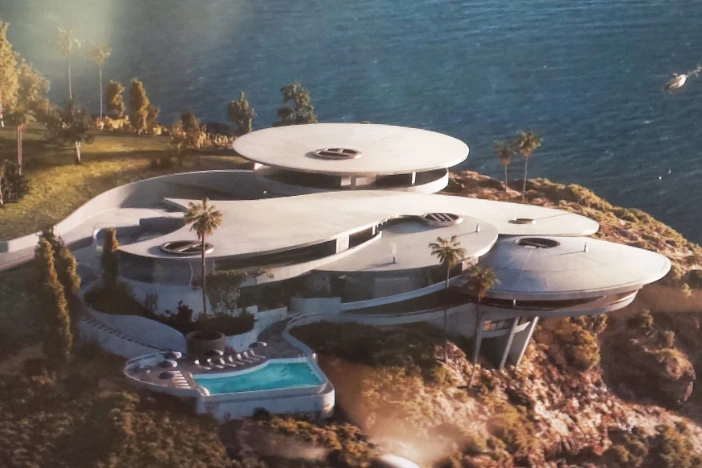
Unsung architectural hero – Tony Stark’s mansion
While much of the Avengers’ appeal lies in their explosive, comic book-inspired action sequences and humor, interior design fans may also be drawn toward an unexpected aspect – Tony Stark’s futuristic Malibu residence. The contemporary mansion rests on the edge of a seaside cliff overlooking the Pacific Ocean. It served as the base of operations for the team, while the Avengers Tower was under construction in New York. Later, the expansive residence was destroyed in a devasting attack by a terrorist group.
Several real-life buildings inspired it – most notably the Razor House, purchased in 2019 by singer-songwriter Alicia Keys for a reported $20.8 million. The home’s interiors were actually used to shoot the indoor scenes in the original Iron Man trilogy.

Razor House – The inspiration
Named for its proximity to Razor Point, a steep and jagged area along the coast of La Jolla, California, the Razor House was designed by Wallace E. Cunningham. The innovative modernist architect began work on the massive three-story, 11,000 ft² complex in 2007 and completed it in 2011. The house was built along the natural contours of the surrounding landscape and offers a stunning panoramic view of the ocean. Its cantilever design extends the usable indoor space and creates unique open-air settings. Razor House features a spacious circular living room, skylights, an underground garage, and infinity pools.
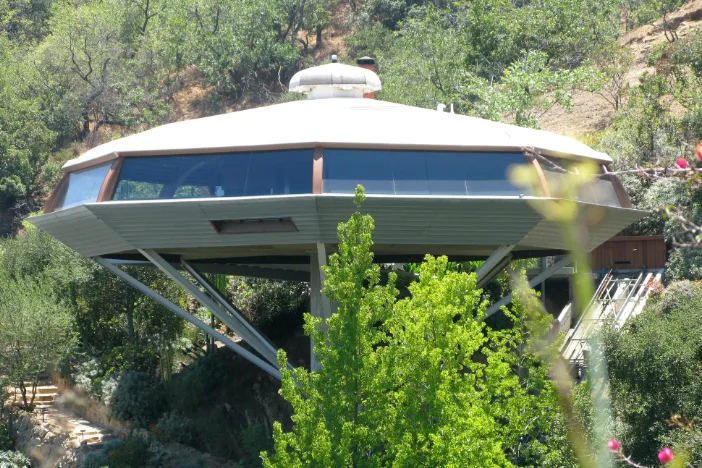
Chemosphere – Another futurist home used in film and TV
Cunningham’s creation is far from the first contemporary residence to find its way into television and cinema. Architect John Lautner’s Chemosphere, designed in 1960, appeared on the science fiction show “The Outer Limits” and was featured in movies such as “Body Double” and “Charlie’s Angels.” Its memorable octagonal design is reminiscent of a flying saucer sitting atop a tall concrete column on a site with a 45° slope. The ingenious design solved an architectural challenge and created an iconic landmark.
While Tony Stark’s Malibu mansion is certainly more aspirational than realistic (unless you too are a tech billionaire), it can be a helpful starting point. You may not be able to mimic the house’s unique combination of futuristic architecture, materials, interior design, and interactive technology, but they can inspire ways to integrate a modernist look into your home.
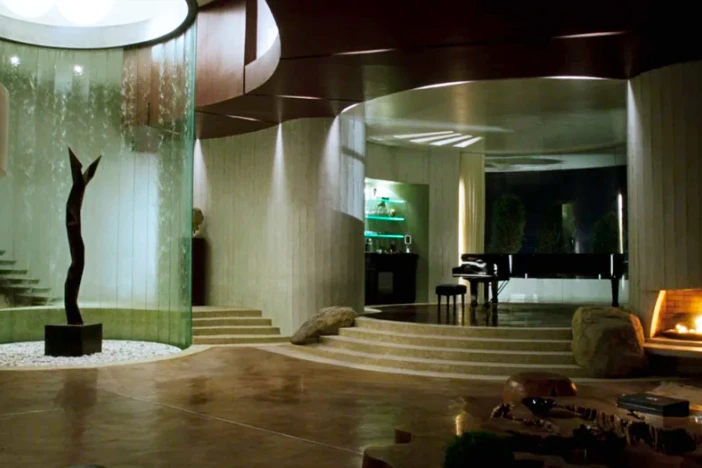
Architecture – Asymmetry & curves
Tony Stark’s interactive home has an almost organic design with few straight lines and many levels. Its open floor plan has seaside floor-to-ceiling windows that connect the spectacular outdoor view to the indoors. The abundance of eco-friendly natural light also creates a positive vibe due to increased serotonin production.
Materials – Concrete, glass & metal (of course for the Iron Man house)
One of the most striking architectural features of the Stark mansion is its heavy use of clear glass and steel in the interior and exterior of the home. The modernist walls and flooring appear made of white polished concrete, which perfectly compliments the home’s encompassing glass pane wall-sized windows. Though used sparingly, sections of the structure also feature shiny metal panels.

Interior design – Sparse decor for a minimalist look
Keeping with the modern appeal of the mansion’s architecture, furniture pieces have clean lines with nominal design ornamentation. Many of the rooms are largely wide-open areas with a small grouping of furnishings. The living room has a long curving leather sofa that complements the circular, futuristic space.
With plenty of sunlight, there is less need for lamps and fixtures to clutter up the decor. The interactive home has plenty of recessed ceiling lights, a strategically placed mid-century modern Arco floor lamp, and machine-age table lamps. The skylights even serve a dual purpose at night providing accent lighting to large abstract sculptures and boulders.
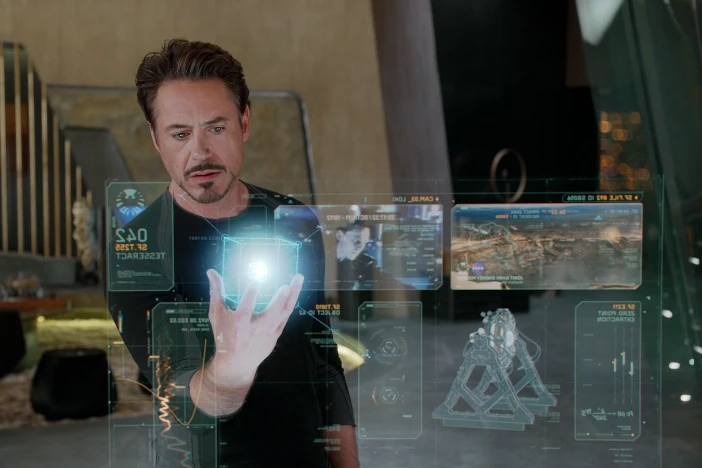
Interactive technology – Connecting people & devices
As much as the aesthetics of the Stark mansion leave an indelible visual mark, the heart and soul of the residence ironically come from Tony’s personal AI J.A.R.V.I.S. (i.e. just a rather very intelligent system). This artificial intelligence gives life and breath to the space and he (we can’t really call Jarvis “it” now, can we?) is an invaluable extension of the preferences and needs of the homeowner.
Although Jarvis isn’t market-ready in the real world and you probably can’t purchase a holographic computer interface, you can integrate smart technology with your house.

What is a Smart Home?
Smart home technology (a.k.a. domotics or home automation) consists of internet-connected devices controlled through a physical hub and app. Examples of smart hubs include Google Nest, Apple HomePod, and Amazon Echo. Residences with smart home systems and devices that share usage data can automate actions based on individual preferences. As part of the IoT (internet of things), smart homes can record, monitor and manage the interaction between connected devices with minimal human intervention. They rely on connectivity technologies such as WiFi, Bluetooth, and ZigBee [Samuel 2016].
Think of it this way – smart appliances and systems in your interactive home keep track of how you interact with them, learn your habits, and adjust based on your schedule. This saves energy, customizes your environment, and saves you time and money.
How does AI fit in with a Smart House?
You can program smart devices or they can respond to voice commands via AI virtual assistants like Alexa, Siri, and Google Assistant. While they may not be as sophisticated or charming as Jarvis, these familiar voice-directed assistants can now do much more than dial a phone number, play your favorite music, or update you on the weather.
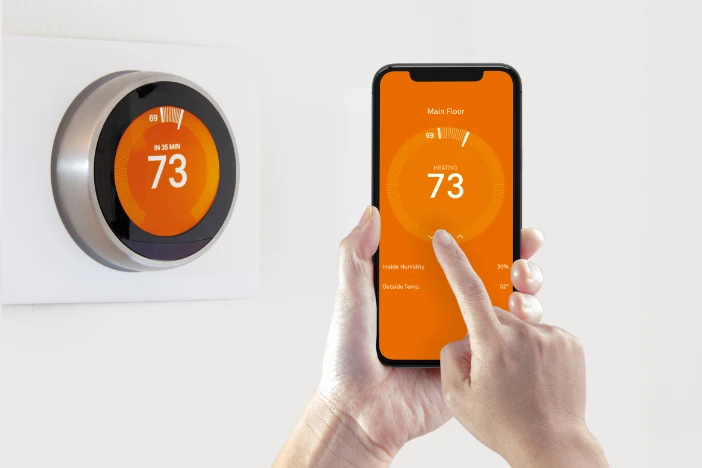
Indoor Smart appliances
There are many devices in your home that you can connect to a smart hub. The most familiar connected smart technology is tied to entertainment devices. Music archives of thousands of songs can be accessed with a few words (sometimes accidentally – I’m talking to you “Alexa”) and movies can be seamlessly watched moving from your mobile phone to your laptop computer to a television. The global smart TV market is expected to reach over $450 billion by 2030 (11.4% annual growth). Other devices, like thermostats, blinds, and lighting, help conserve energy and minimize utility costs. Some perform everyday tasks that are on a schedule. Vacuuming, pet feeding, making coffee, and reminding of upcoming events are among the most popular. Smart security systems keep your home safe indoors and out with monitored doorbells, locks, motion detectors, lights, and cameras.
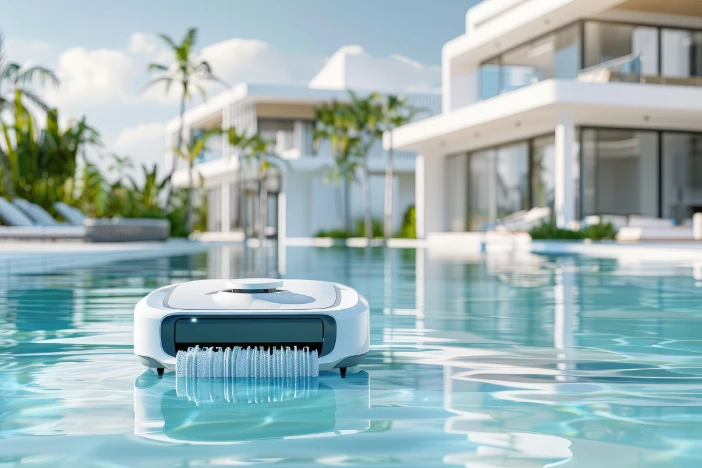
Outdoor Smart Home devices
Interactive home technology extends outside as well. Keep your yard looking great with automated sprinklers and a rechargeable robotic lawn mower that trims the grass on a schedule. Smart pool monitors check the chlorine level and PH balance of the water, while robotic cleaners rid the walls and floor of dirt and debris.

Smart cabana style pergolas & umbrellas
One of the coolest outdoor product categories to integrate smart technology is shade structures. These state-of-the-art smart pergolas create a luxurious al fresco setting that automatically adapts to changes in the environment to keep you comfortable, protected, and entertained. Smart heaters and fans adjust the temperature, while rain, wind, and sun sensors inform the louvered roof and wall blinds to shelter you from the elements. Adaptive lighting illuminates your space, brightening or dimming as the daylight dictates. Need a little excitement? Smart speakers and TV are a voice command away from setting the mood or playing the big game. Shade brands like StruXure and Somfy are among the early entrants in this emerging luxury market.
Shadecraft manufactures two solar-powered robotic center post umbrellas that open automatically and have environmental sensors, Bluetooth and LED lighting. Their Sunflower model even rotates with the sun.
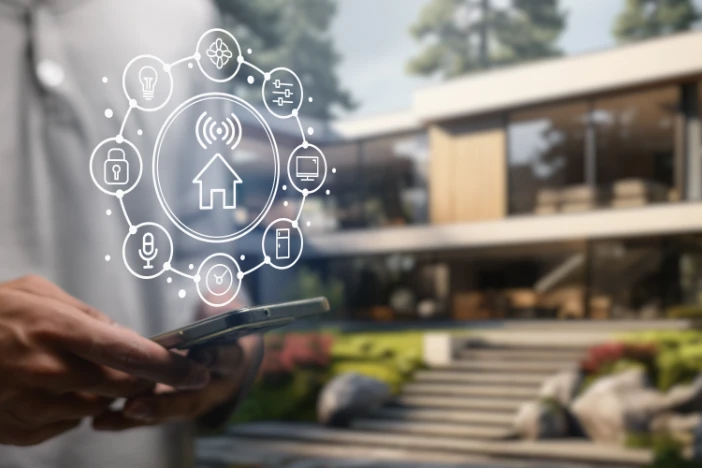
Modernize your interactive home like Iron Man’s with smart technology
The future is closer than you think with advances in artificial intelligence coming in rapid waves rather than small increments. Interactive connected devices are here and smart homes are helping homeowners become more efficient with daily activities. This frees up time and reduces worry, allowing you to relax and enjoy your everyday life a little more. At least until Skynet becomes self-aware but that’s another movie franchise entirely.
References
- Samuel, S. S. I. (2016, March). A review of connectivity challenges in IoT-smart home. In 2016 3rd MEC International Conference on Big Data and Smart City (ICBDSC) (pp. 1-4). IEEE.
Photo Credits
- Tony Stark Mansion – Marvel Studios
- Razor House – Gary Kasl
- Chemosphere – Squid Ink on Flickr
- Smart Pergola – StruXure Norcal





Leave a Reply